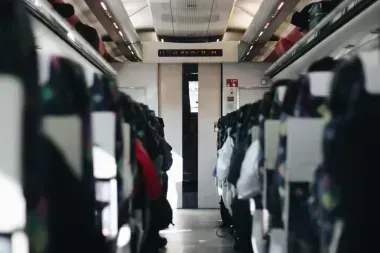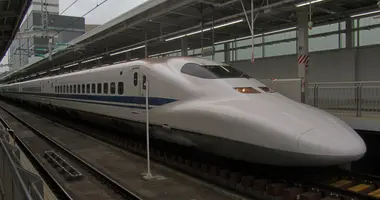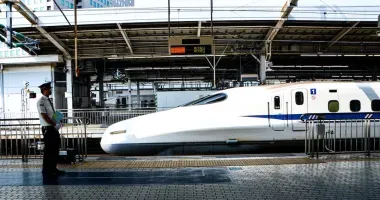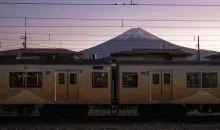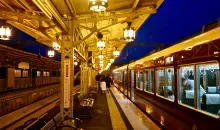Tokaido Shinkansen - The Bullet Train Connecting Tokyo, Kyoto and Osaka
- Published on : 26/01/2024
- by : Japan Experience
- Youtube
Tokaido Shinkansen: the most popular Shinkansen in Japan
The bullet train going from Tokyo to Osaka has three different lines. What's the difference? Read more to find out.
The Tokaido Shinkansen is Japan's busiest and most popular high-speed rail line, transporting over 150 million passengers annually. This bullet train line connects the country's three largest metropolitan areas - Tokyo, Nagoya, and Osaka/Kyoto - along the Pacific coast of Japan's main island of Honshu. Inaugurated in 1964 as the world's first high-speed rail line, the Tokaido Shinkansen has become a symbol of Japan's technological prowess and commitment to efficient transportation. From Kansai, the Tokaido Shinkansen transitions into the Sanyo Shinkansen that goes out to Fukuoka in Kyushu, passing stops like Hiroshima along the way.
Route and major stations served by the Tokaido Shinkansen
The 552.6 km (343 mi) Tokaido Shinkansen route runs from Tokyo Station to Shin-Osaka Station, making stops at major cities like Shinagawa, Shin-Yokohama, Nagoya, and Kyoto along the way. Other stops include Odawara (gateway to Hakone), Atami, Shizuoka, Hamamatsu, and Maibara. The line generally follows the old Tokaido road, a historic route that has connected Tokyo (formerly Edo) and Kyoto for centuries. With trains running every few minutes, the Tokaido Shinkansen provides quick and convenient access between these major population centers.
Types of trains and services - Nozomi, Hikari and Kodama
Three train services operate on the Tokaido Shinkansen line:
- Nozomi - The fastest trains, stopping only at major stations. Nozomi trains are not covered by the Japan Rail Pass.
- Hikari - The second fastest service, stopping at a few more stations than the Nozomi. Hikari trains can be used with the Japan Rail Pass.
- Kodama - The slowest service that stops at all stations on the Tokaido Shinkansen line. Kodama trains can also be used with the Japan Rail Pass.
Most trains have both reserved and non-reserved seats in regular cars as well as upgraded Green Cars (first class).
Using the Japan Rail Pass on the Tokaido Shinkansen
The Japan Rail Pass is a cost-effective way for foreign visitors to use the Tokaido Shinkansen (and most other JR trains across the country). Pass holders can ride the Hikari and Kodama trains without any additional fees - just show your pass at the ticket gate. However, the fastest Nozomi services require paying a limited express surcharge, so if minimizing costs is the priority, stick to the Hikari or Kodama. Using a Japan Rail Pass is highly recommended if you plan to ride the Tokaido Shinkansen.
Onboard experience and amenities
Riding the Tokaido Shinkansen is a smooth, quiet and comfortable experience, even at speeds of 285 km/h (177 mph)! All seats are forward-facing and recline slightly. Onboard amenities include:
- Overhead luggage racks
- Electrical outlets
- Fold-down tray tables
- Toilets in each car
- Vending machines and food/beverage carts
- Free WiFi
Announcements are made in both Japanese and English. Trains are fully non-smoking. Each car has designated storage areas for larger luggage at either end.
Interesting facts and statistics about the Tokaido Shinkansen
Here are some fascinating stats and trivia about this iconic train line:
- Tokaido Shinkansen trains depart every few minutes during peak hours, with up to 13 trains per hour in each direction - one of the most frequent services in the world!
- The line carries an astounding 452,000 passengers per day on average (FY 2016), for an annual ridership of over 150 million.
- Tokaido Shinkansen trains are extremely punctual, with an average delay of just 0.3 minutes per train.
- The line has carried over 6.4 billion passengers between 1964 and 2014 without a single passenger fatality due to train accidents.
- Energy consumption per seat between Tokyo to Osaka is about 1/8th that of aircraft and CO2 emission rates are around 1/12th, giving the Tokaido Shinkansen a much lower environmental impact.
Future plans and developments for the line
Several new developments are planned or underway for the Tokaido Shinkansen to further increase speed, capacity, energy efficiency and safety:
- JR Central has been introducing newer, lighter and more energy-efficient N700A shinkansen train sets, which will eventually replace all older 700 series trains by 2020.
- Increased maximum speed from 270 km/h to 285 km/h in 2015, with plans for more speed increases.
- Research into new maglev shinkansen technology that could connect Tokyo and Nagoya by 2027, operating at over 500 km/h. The line will eventually extend to Osaka.
- Exploring the possibility of a new station in Shizuoka Prefecture near Mt Fuji to improve access for tourists.
- Various infrastructure upgrades and new-technology testing to make operations more resilient against earthquakes and extreme weather.
The Tokaido Shinkansen will no doubt continue to serve as a crucial high-speed link and be integral to Japan's transportation network for many decades to come. This vital train line demonstrates Japan's continuous innovations in making rail travel faster, safer, more efficient, and more comfortable than anywhere else in the world!


